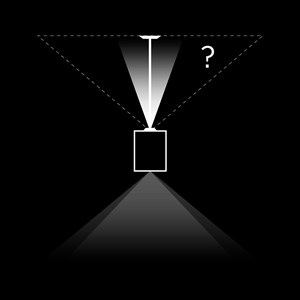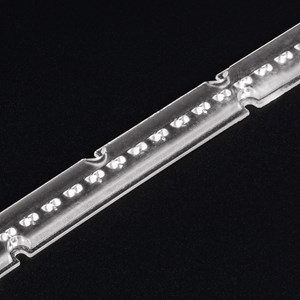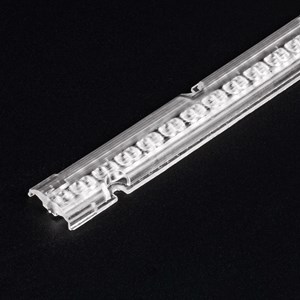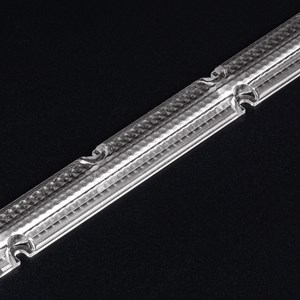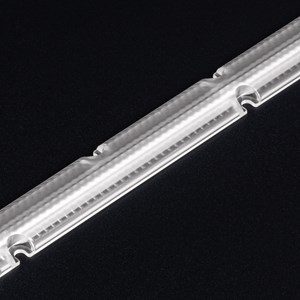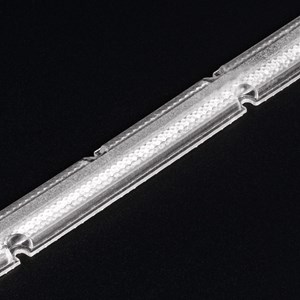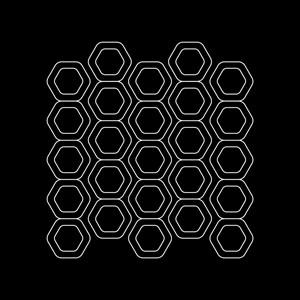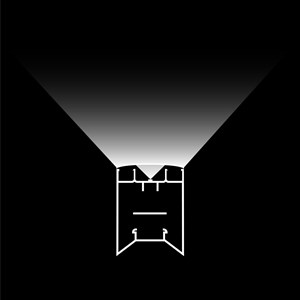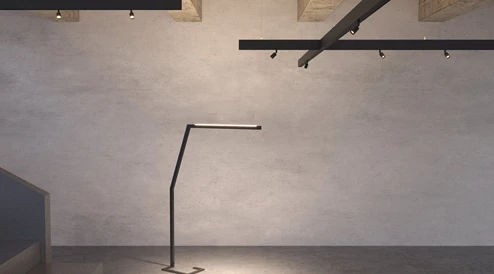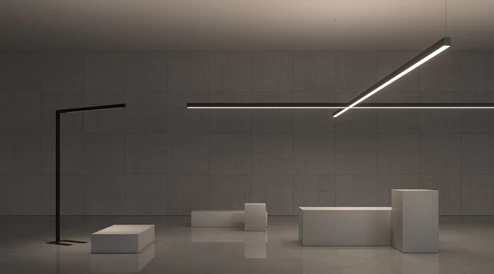Content

BATWING LENSE
UNIQUE. ELEGANT. INDIRECT.
The development of the Batwing Lens began with a challenge familiar to lighting designers and architects alike: How do you create indirect, uniform lighting in low ceilings without disturbing hot spots, harsh shadows or uneven light distribution?
Conventional lenses and diffusers have proved their worth in many scenarios, particularly in rooms with high ceilings or large distances between the light source and the ceiling. In such applications they produce a uniform light distribution and a pleasant light pattern. However, with lower ceiling heights or suspended profiles mounted close to the ceiling, traditional solutions reach their limits: The light becomes more concentrated, which can lead to spot lighting and visible differences in brightness on the ceiling and walls.
The first image illustrates the hot spots that can occur with conventional indirect lenses at low ceiling heights. The second illustrates the light distribution provided by the Batwing lens without the hard transitions.
The first image illustrates the hard shadows that can occur with conventional indirect lenses at low ceiling heights. The second illustrates the solution offered by the Batwing lens with its wide, even light distribution.
In designing the Batwing Lens, our aim was to refract and direct light beams in a way that produces uniform illumination even in challenging scenarios. The innovative lens makes this possible thanks to its flat, precise geometry, regardless of the height or orientation of the luminaire. Now, finally, we made this vision a reality: With the Batwing Lens, we offer a solution specially optimised for low ceilings and suspended luminaires, while conventional solutions remain the ideal choice for high ceilings and greater distances from the light source.

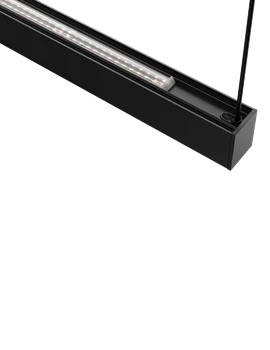
The Batwing Lens is no ordinary diffuser, but an innovation in indirect lighting solutions. Its special geometry and unique surface structure distributes the light to create a large area of uniform brightness, changing the overall feel of the room. The light beam is intelligently directed so that it emerges in a wide curve, providing uniform illumination of the ceiling. This uniformity is achieved even with very low pendant heights - and without annoying hot spots!
THE STAGES OF DEVELOPMENT: FROM THE IDEA TO THE PERFECT LENS
UNIQUE IN DESIGN AND FUNCTION
The Batwing Lens differs from conventional lenses through its innovative combination of surfaces in a single linear lens. As a result, each surface is specifically optimised for efficiency and homogeneity. The fine micro-convex lens structure on the upper surface ensures rotationally symmetric mixing of the light rays, resulting in particularly uniform light distribution.
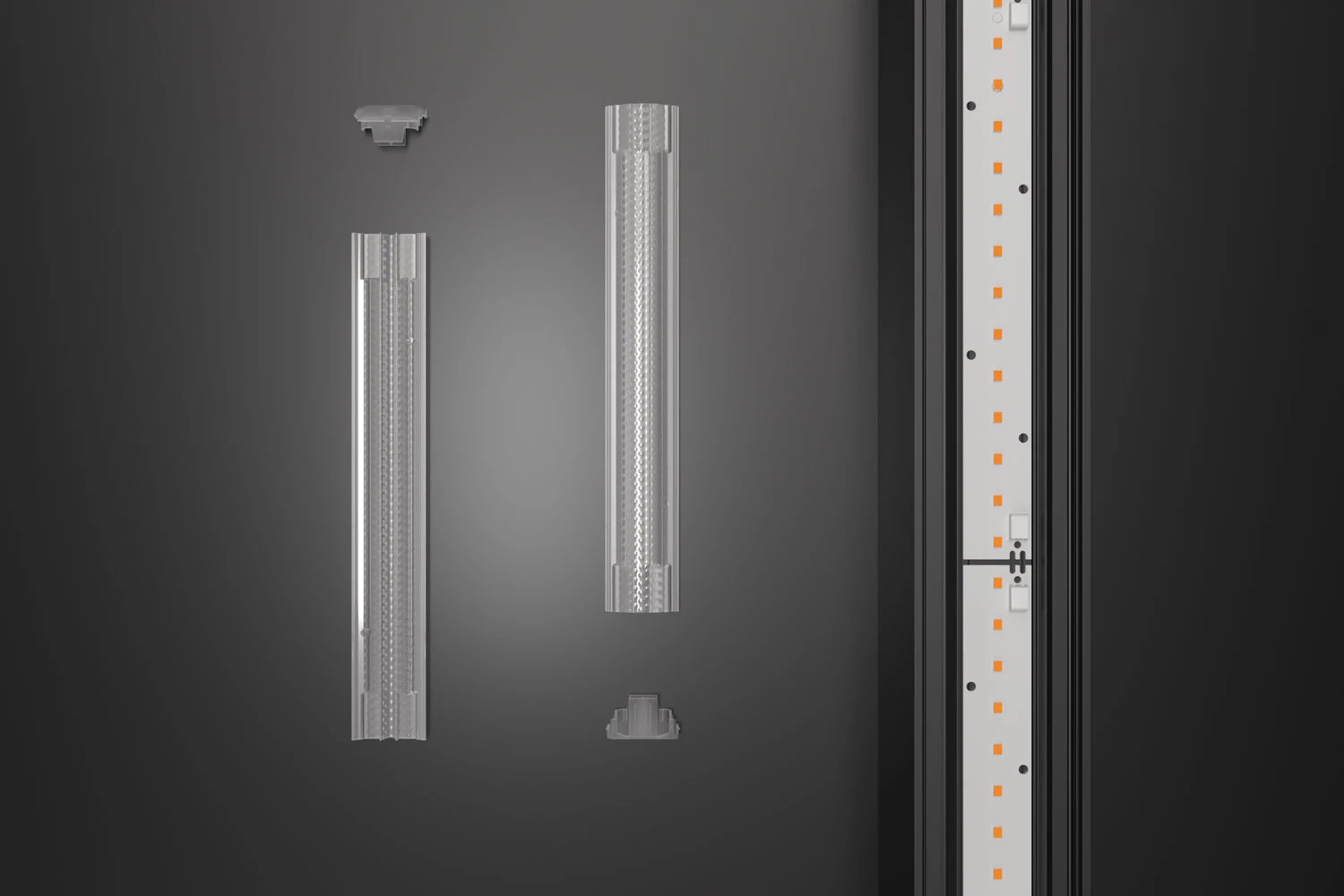

TARGETED LIGHT REFRACTION
The Batwing lens directs light in a unique way: The specially designed geometry ensures that the light is distributed indirectly across the ceiling, creating uniform brightness. From a certain angle of incidence, the light beam is refracted inwards rather than outwards, creating a highly efficient, indirect illumination of the ceiling surface.
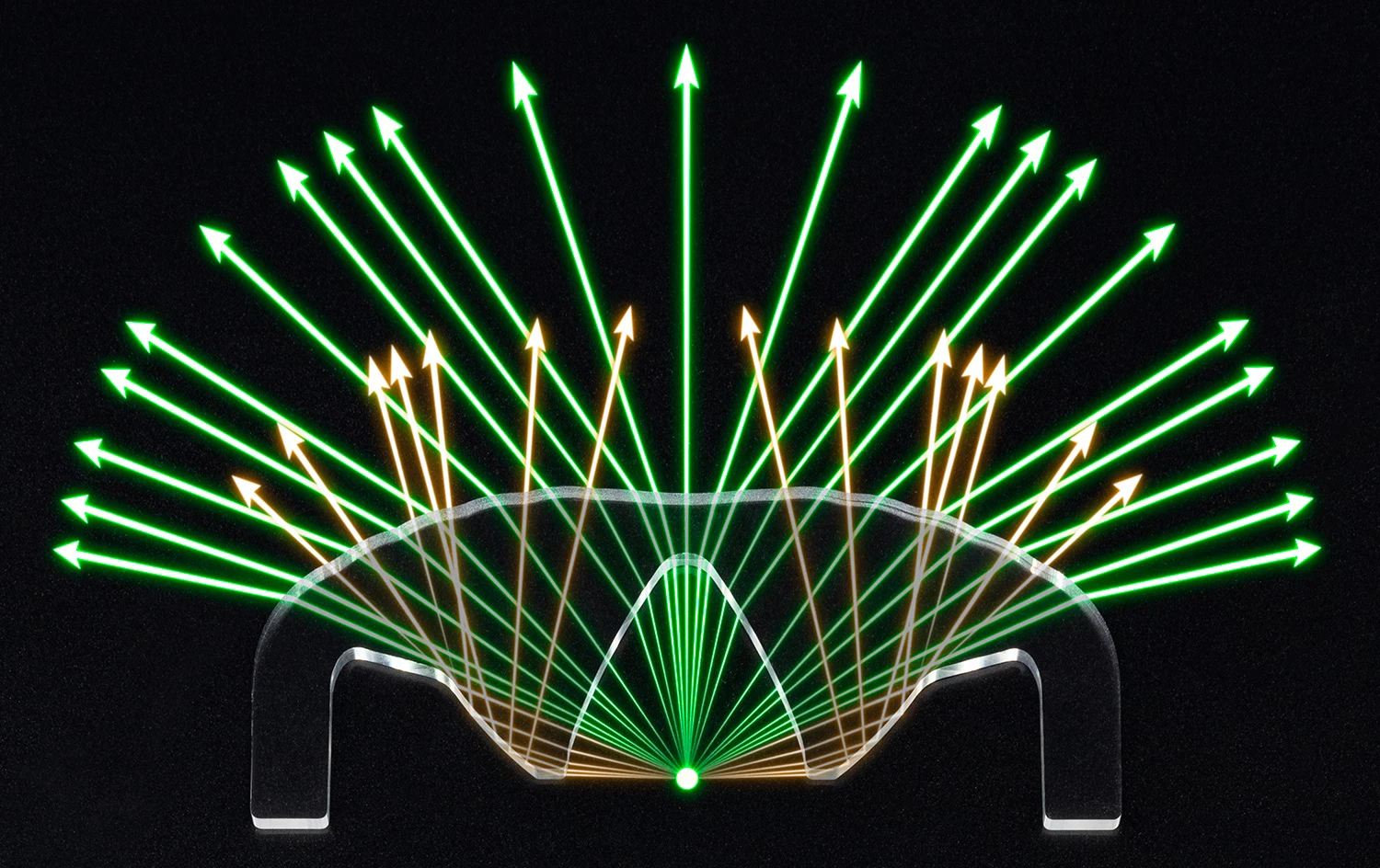
WONDERING HOW THE NAME CAME ABOUT?
The name has been used in the lighting industry for a long time and is derived from the shape of the light distribution curve. In conventional batwing lenses, this is very bat-like.
BATWING LENS VS. STANDARD LENS: HOW THE LIGHT INTENSITY DIFFERS IN THE RELUX/DIALUX
In Relux/Dialux, the difference between the Batwing Lens and a conventional lens is particularly clear. With the Batwing Lens, there is no clear concentration of light in a hotspot, but rather an even, well-distributed light on the ceiling. This ensures that the light is neither too strong nor too weak. Another advantage is evident in the simulations: even if the pendant height of the luminaire is varied, this effect of uniform light distribution is maintained.
The example shows the light output of the Batwing lens at a low ceiling height of 2.5 metres. Two different suspension heights have been tested.
In comparison, this example shows the effect of light output with a conventional lens at the same room height and pendant height.
The example shows the light output of the Batwing lens at a standard room height of 2.8 metres. Two different mounting heights have been tested.
In comparison, this example shows the effect of light output with a conventional lens at the same room and mounting heights.
THE 5 KEY STRENGTHS OF THE BATWING LENS
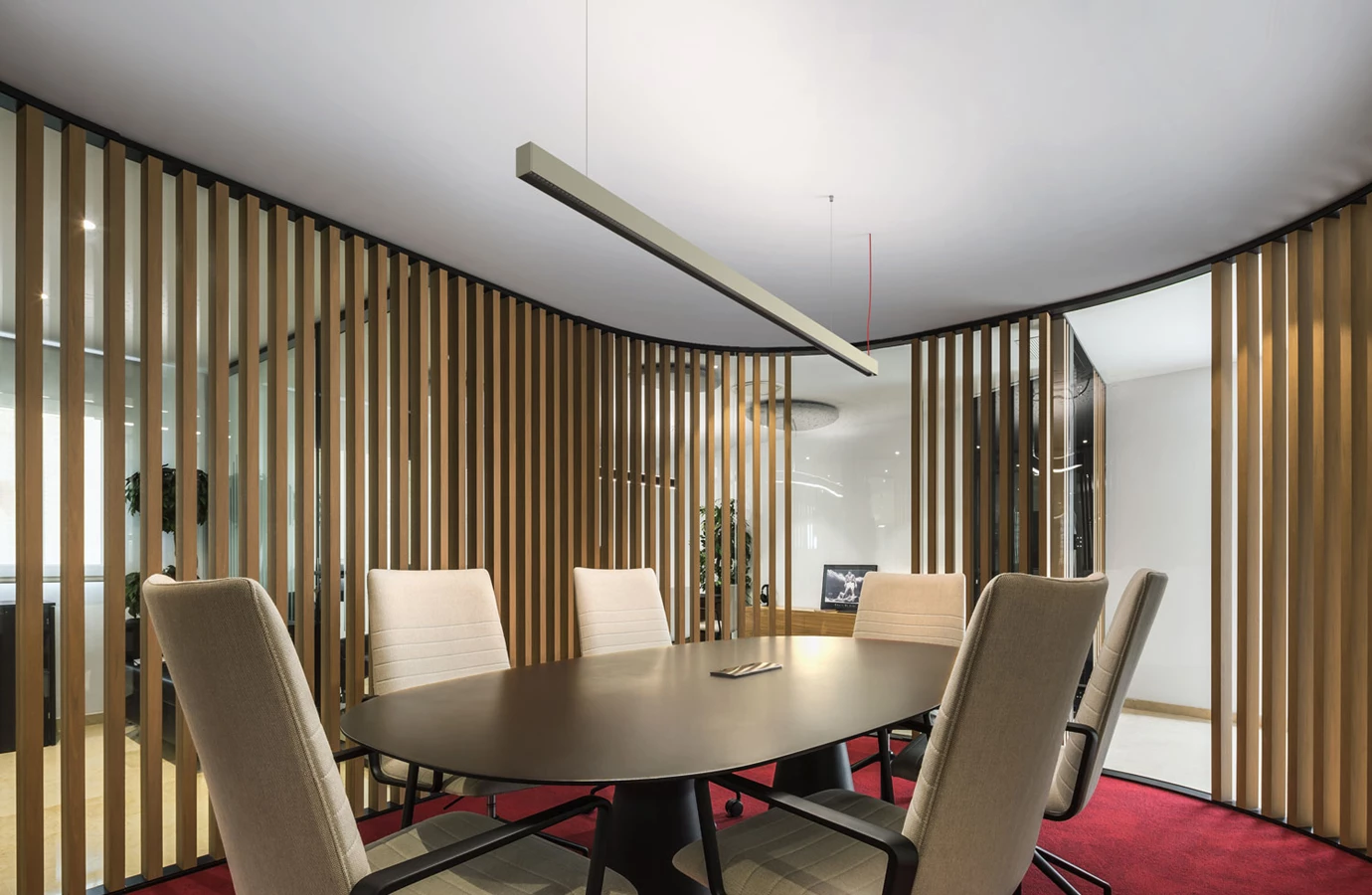

The Batwing Lens is designed to be a universal solution for a wide range of luminaire families. Its modular design allows it to be flexibly adapted in length and width and easily combined with a wide range of LEDs.
PRODUCTS
It is currently used in our SLIDER or SLIDER-F and HYPRO or HYPRO-F products, but its potential goes far beyond that: the Batwing Lens is designed to be used in all future profile systems. This flexibility makes it the ideal choice for all indirect lighting solutions and allows us to provide future lighting innovations with perfect light distribution.
HAVE WE PIQUED YOUR INTEREST AND DO YOU HAVE ANY FURTHER QUESTIONS?
Please contact us if you have any questions about the Batwing Lens or our innovative lighting solutions. We will be happy to explain all the details and help you choose the right solution for your individual needs.

